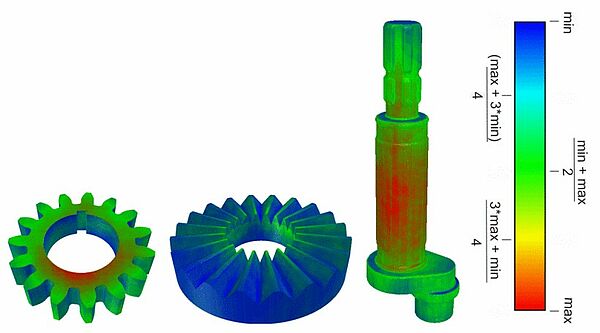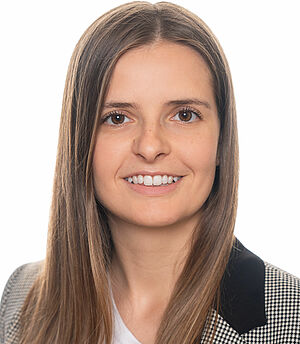With resource efficiency, skills shortages, and the demand for sustainable production on the rise, it is becoming increasingly important for manufacturing industries to automate quality inspection processes, hence the need for the research conducted by Vanessa Staderini towards automated optical visual 3D inspection.
Vanessa Staderini is conducting her research at the Center for Vision, Automation & Control (VAC) at the AIT Austrian Institute of Technology. For her PhD project supervised by Prof. Andreas Kugi in the field of optical inspection planning, she is developing automated methods for the efficient and complete acquisition of both object geometries and small surface defects for a variety of different 3D objects. This poses great challenges for path planning as well as for the actual robot-assisted optical data acquisition.
She has now presented her first results at the 13th IEEE International Conference on Pattern Recognition Systems (ICPRS) and published them in a paper entitled "Surface sampling for optimal viewpoint generation". Her work convinced the panel of the conference that recognized her work with the Best Student Paper Award.
About the scientific contribution “Surface sampling for optimal viewpoint generation“
Together with T. Glück, P. Schneider, R. Mecca and A. Kugi, Vanessa Staderini introduces a novel algorithm for generating viewpoints that considers the object’s geometry and the model of the optical sensor. This algorithm provides high coverage while being robust to occlusions when applied to objects of varying geometric complexity. This approach uses techniques such as Poisson disk sampling and visual ray tracing to formulate a binary optimisation problem. The numerical solution to the optimisation problem results in a minimum number of camera positions that provide maximum coverage. This allows for complete spatial coverage in minimal inspection time.
A special feature of this method is that no complex pre-processing of the CAD model of the test object is required. Remarkably, complete spatial coverage is achieved even for complex 3D object geometries. This statement is backed up by simulation results that demonstrate the performance in comparison to results previously documented in the literature.

“I am truly honoured to have received this award. The paper was considered to have been written with an emphasis on clarity and coherence. We worked hard to ensure that the results of our research were presented in a way that was not only technically sound, but also easily understandable to a wide audience, and it was gratifying to see them recognised. Knowing that our work has been positively evaluated by the international scientific community is gratifying. It reaffirms my passion for research and motivates me to continue pushing the boundaries of knowledge in our field. Furthermore, this recognition reflects positively on the AIT and our research team. It shows our commitment to excellence and our ability to contribute meaningfully to the scientific community while keeping the needs of industry in mind.”
Congratulations on this success!
About Vanessa Staderini
Vanessa studied Biomedical engineering in Pisa and obtained a MSc in Robotics and Automation at the University of Pisa.
For one semester, she studied as exchange student in China at the Beijing Institute of Technology.
She joined the AIT Center for Vision, Automation & Control (VAC) in November 2021. Her PhD project links path planning and automated, robot-assisted optical quality inspection – both key research areas at VAC.
View the paper
V. Staderini, T. Glück, P. Schneider, R. Mecca and A. Kugi, "Surface sampling for optimal viewpoint generation," 2023 IEEE 13th International Conference on Pattern Recognition Systems (ICPRS), Guayaquil, Ecuador, 2023, pp. 1-7, doi: 10.1109/ICPRS58416.2023.10179043.



